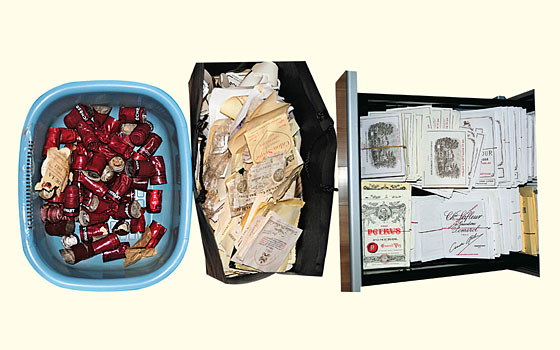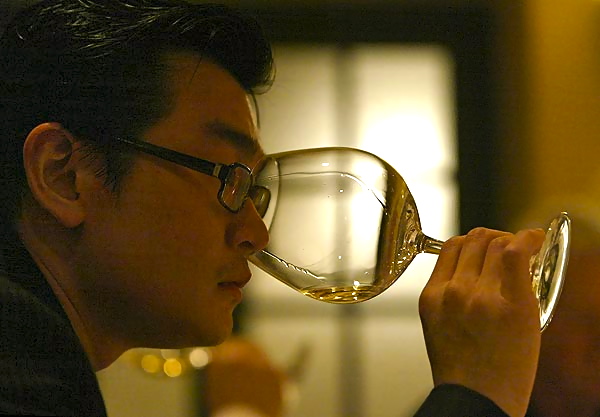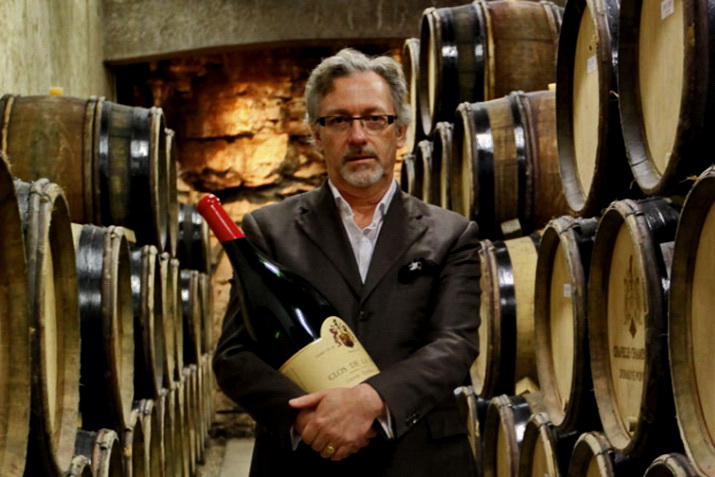So big it will poison the auction market for rare Burgundy for years
‘Millions if not tens or hundreds of millions of counterfeit wines are sold every year,’ said energy billionaire William Koch after he won a lawsuit against a consigner who’d sold him counterfeit bottles of old Bordeaux, some of it from Jefferson’s time. ‘The counterfeiters don’t want anyone to know, for $100 they make it and mark it up to $15,000, I myself paid $100,000 for a counterfeit wine. To me the whole industry is corrupt.’
Wine scandals are pretty common, perhaps because wine is such a fickle commodity. Even experts and experienced people in the trade are often taken in, which brings us back to one of my favourite topics: the difficulty of judging wine. The older the wines are, the more difficult they are to judge.
The usual kind of wine scam involves passing off cheap wine as something better and getting more money for it. That’s what happened from 2006 to 2008 in the USA, after the movie Sideways had ridiculed Merlot and Americans turned to Pinot Noir. E & J Gallo was found to be selling an $8 French Pinot Noir under its Red Bicyclette label that was mostly made from Merlot and Syrah – some 18 million bottles of it, worth nearly $5.5 million.
High Rollers, Big Stakes
At the other end of the quality scale, the stakes were sky high. The Koch vs Greenberg case that produced the quote above involved a German collector called Hardy Rodenstock who’d supplied the wines to Greenberg, and proved extremely unhelpful when it came to nominating the source he’d bought them from. Benjamin Wallace wrote a book about the episode under the title ‘The Billionaire’s Vinegar,’ which would drag UK fine wine expert Michael Broadbent into the affair. Broadbent successfully sued the book’s publisher Random House for defamation of character.
The Rudy Kurniawan scandal played out on an even tighter high wire, among the high rollers of fine wine, among auctioneers of fabled labels, among wealthy hunters and collectors. It played out in the finest restaurants of Los Angeles and New York, in the auction rooms of houses with big reputations and in a private home where a skilful blender rebirthed great bottles of the finest wines in the world.
In March 2012, FBI agents arrested Kurniawan at his home in Arcadia, a suburb of Los Angeles, and charged him with multiple counts of wire and mail fraud. Apparently the FBI agents discovered a fully equipped counterfeiting factory, with scores of bottles and thousands of fake labels for top wines from Burgundy and Bordeaux. It didn’t take long for the fine wine trade to realise that this scam was so extensive it would leave the market for rare old wines corrupted for decades.
Photo: Unites States Attorney’s Office for the Southern District of New York
From out of nowhere
Benjamin Wallace writes in The New York Times article Chateau Sucker that Kurniawan started attending weekly tastings at the Red Carpet, a wine store in Glendale, back in 2001 at the age of 25. ‘Early the following year, at a charity auction in Paso Robles, he made a stir when, bidding on a hotly contested lot of the cult California Syrah Sine Qua Non, he simply held his paddle aloft until he won.’
Over the next couple of years, Rudy seems to have graduated from California Cabernet to Bordeaux to Burgundy and learnt all about all of their wines at warp speed. ‘He was soon making a splash in auction rooms,’ the NYT article goes, ‘spending an estimated $1 million a month.’ ‘He cornered much of the megamarket,’ auctioneer John Kapon would later say. Largely because of Kurniawan’s influence, old-wine prices rose dramatically. In 2002, a bottle of 1945 DRC (Domaine de la Romanée-Conti) sold for $2,600. Last year, one went for $124,000.
Wine as a high stakes adventure
Wine high rollers are like high stakes gamblers, except that the chances of winning are much harder to assess. Old wines are treacherous terrain, especially old Burgundy. Only a few decades ago, even Burgundy’s best wines were mostly bottled by shippers or negociants (due to the small quantities made) and labelling was anything but consistent. This was ideal terrain for counterfeiters: rarity guaranteed that the prices were lofty and that few people had ever tasted the real thing.
Both the Chateau Sucker article in the NYT and Michael Steinberger’s Vintage Crime article in Vanity Fair make clear that Rudy didn’t put much effort into building his credibility, such as where he’d come from or how he’d made his money. Instead he simply splashed so much rare wine around at special dinners he gave at the fanciest of restaurants that all the high rollers just went weak at the knees and fell down at his feet.
Even Robert Parker was taken in, calling Rudy ‘a very sweet and generous man.’ When Rudy threw a 60th-birthday party for his mother Mélisse at a fancy restaurant in Santa Monica, Steinberger wrote: ‘Jackie Chan stood on a chair holding a jeroboam of Château Pétrus and shouted, “Rudy, you are the best!” ‘
Even Rudy’s habit of having the empties from these feasts shipped to his house didn’t raise eyebrows, even when he threw a wobbly when some of them were broken in transit.
The Big Con
Rudy was only in his late twenties but he had lots of front, and he had the fancy cars and clothes and a Centurion Amex card to go with it. He must’ve had a partner with funds, and he clearly had a game plan. After spending millions at rare wine auctions, Rudy began selling wines on a large scale. In 2006, auctioneers Acker Merrall sold 1,700 lots for a total of $10.6 million. In October of the same year, the same auctioneers held another sale of Rudy’s collection which grossed $24.7 million.
This ‘smashed the previous record for an auction of wines owned by a single individual by $10 million,’ Steinberger says and adds, ‘these two sales, which included wines seldom seen at auction and in quantities that were striking, vaulted Acker to the top of the global wine auction market. And here’s a curious aside of this strange business: auctioneers are fiercely competitive, and will bend over backwards to get a big consignment of rare wines and make a big splash.
‘Auctioneers may not want to risk losing consignments by nitpicking ambiguous bottles,’ writes Ben Wallace in the New York Times article. High rollers, on the other hand, like to brag about their hauls of fabled bottles they paid fantastic amounts of money for. They don’t ask too many questions either, nor do their guests at these mega tastings; they’re too busy drooling. Even winemakers don’t like asking too many questions in case they tread into something sticky and spread it around.
Wallace adds: ‘One thing not high on the FBI’s list of investigative priorities [is] billionaires getting snowed by wine forgers. It’s clear to everyone on this rarefied circuit that wine fraud is rampant. It’s also clear not many insiders feel an urgency to do anything about it.’
The Game is Up
In the end it was a winemaker in Burgundy, Laurent Ponsot, who would be Rudy’s undoing. Ponsot began making wine under a new Clos Saint-Denis label in the early eighties, so when he heard from New York lawyer and collector Doug Barzelay in April 2008 that Acker Merrall was about to auction more than three dozen bottles of Domaine Ponsot Clos Saint-Denis from 1945 to 1971 in New York, he went along.
Laurent Ponsot, Photo credit: Paris Match
Steinberger says ‘Ponsot left the lunch next day uncertain whether Kurniawan had simply tried to dump some fake wines that he had unwittingly bought, or was a counterfeiter himself.’ Steinberger calls Ponsot ‘one of Burgundy’s more colourful characters. ‘Over the years, his pastimes have included mountain climbing, race car driving, and stunt flying. A trim, energetic 58-year-old, he is disarmingly frank and possesses a wry sense of humour. These days, he introduces himself to visitors as “the head of the French bureau of the F.B.I.—fake bottle investigations”.’
Ponsot did a bit more digging back home and found that Rudy had been buying large stocks of old négociant Burgundies. Until the mid 1970s, most producers in Burgundy sold their limited output to merchants who bottled the wines and sold them under their own labels. Keeping precise track of these bottlings and their labels was virtually impossible for collectors of fine Burgundy.
The Faker
This seems to have been the turning point, and added weight to the stories that some of the wines Rudy had sold at the two big auctions the previous two years were of dubious authenticity and had been returned to the auctioneers. There were also rumours that Rudy owed millions and couldn’t pay them back. Like many con artists, Rudy had become careless and spent big on fancy cars and artworks that included Andy Warhol paintings. A $10 million renovation of his home in Arcadia, which spawned multiple law suits and counter suits, was said to have been the last straw on his camel’s back.
In September 2009, Bill Koch filed a lawsuit against Kurniawan, claiming Rudy had sold him counterfeit bottles through Acker Merrall in 2005 and 2006. In addition, the suit asserted that Rudy’s real name was Zhen Wang Huang and that he had defaulted on almost 10 million dollars worth of loans. Why Rudy didn’t take his cue and leave the country at this point is a mystery. He had lots of time since the FBI didn’t strike until 2012, and surely a forger of Rudy’s calibre would’ve had no trouble faking a passport for himself.
It would turn out that he was a refugee from Jakarta who’d arrived in the USA in 2001 and had been denied political asylum. In 2003, after his appeal was rejected, he was ordered to leave the country. He never did and had lived in the United States illegally ever since.
Business as Usual
‘There seems little doubt that the fine-wine business is awash with fraudulent rarities,’ says Steinberger. ‘Laurent Ponsot recently claimed that 80 percent of pre-1980 Burgundies being sold at auction nowadays are fake.’ Over time, these wines will most likely find new homes in Asia. Hong Kong is now a bigger hub of fine wine auctions than London and New York. The buyers here are wealthier and less knowledgeable, and the auctioneers are less experienced than their counterparts in the western world – a perfect combination.
John Kapon, CEO of Acker Merrall & Conduit
Given the size of this scandal, and the bad publicity it generated, you may be surprised to learn that the fine wine auction scene has taken it all in its stride. Major auction houses are still reporting big revenues from fine old wine auctions; even Acker Merrall & Condit who sold most of Rudy’s fakes is doing good business.
In 2013, CNN Money ran a feature on CEO John Kapon saying he was the first wine-only auctioneer to surpass the $100 million in annual revenue mark, and that ‘the 41-year-old spends about 120 days a year on the road, mostly courting the still-booming Asian wine market.’ Not a word of the biggest wine scandal that hit the headlines just a year earlier.
It looks like everyone just wants the show to go on, and no one wants to admit that it’s a crock. That’s what makes this such a rewarding target for fakers. Rudy was also smart enough to figure out that old Burgundies were the best targets for his purposes. Old Burgundies are the Holy Grail of fine wine collectors. Great old bottles of Burgundy are hard to find, but can be a wonderful experience when you strike it lucky.
The irony is that, until the 1960s, Burgundy shippers used to add wines from the southern Rhone to their red Burgundies in poor years to give them more colour and body. Before World War II, pretty much anything went. No one really knew what went on or how many bottles of a wine were produced under which labels. Also, there’s huge bottle variation in really old wines, and very few people have tasted them often enough to tell fakes from the real thing. In other words, it’s pretty safe terrain for faking it on a large scale.
Kim




